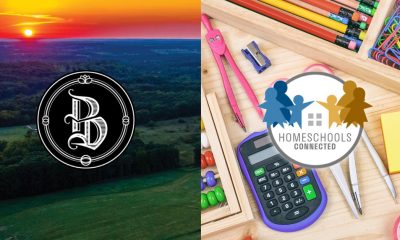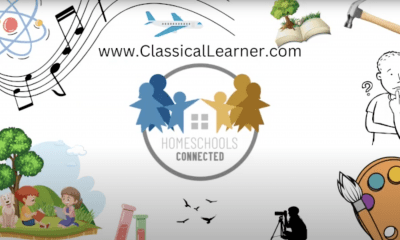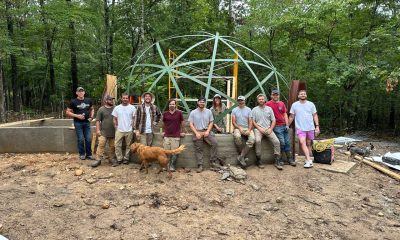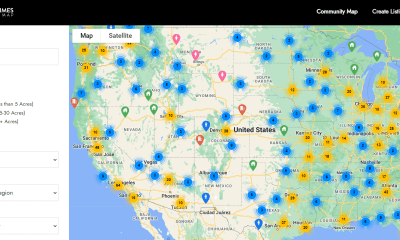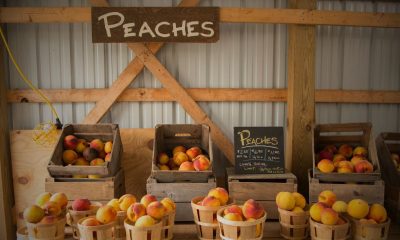Business
Former NASA Mechanic Secured To Design Classical Learner’s Elementary STEM Program
“Skills create opportunities, and we can use those skills to guide our children to become young entrepreneurs and create opportunities for themselves.”

We have received word from Brett Pike at classicallearner.com that former NASA mechanic and industrial engineer Mark Thaxton has been secured to design Classical Learner’s homeschool elementary STEM program.
Mark has vast experience as a helicopter mechanic in the Marines, a wind tunnel mechanic at NASA, and currently an industrial engineer in the truck industry.
This is big news for the growing homeschool curriculum and social network.
While Brett’s expertise in American history and entrepreneurial education has launched Classical Learner and Homeschools Connected to success, the new STEM program is set to take Classical Learner to a new level of in-depth science, technology, engineering, and math studies.
Brett told a reporter at Beartaria Times,
“We as parents can teach our children real skills for the real world from a very young age. Skills create opportunities, and we can use those skills to guide our children to become young entrepreneurs and create opportunities for themselves.”
Brett Pike
Engineer Mark Thaxton added,
“I aim to help the youth truly understand the most basic fundamental concepts used in making and designing all we do and see.
We can erase the stigma that engineering language and concepts are too abstract for anyone to learn and understand.
I want to eliminate the “magic” behind the way things work and give that “magic” names, logic, and ways to use them throughout life.
The ultimate goal of these lessons is to use basic fundamental concepts as the base of your learning castle. I sincerely hope that when learning something new and complicated in the future, our students will be able to draw a parallel to these courses, which will aid in understanding those future concepts.”
Congratulations Brett and Mark!
We are excited to see this develop and the response from Classical Learner’s growing community of homeschoolers.
@ClassicalLearner on The Beartaria Times to connect with Brett.
@Thaxton Bear on The Beartaria Times App to connect with Mark.
For a three-day free trial and to support Beartaria Times, you can sign up to Classical Learner’s Homeschools Connected platform with an affiliate link,
ClassicalLearner.com/Beartaria
Business
3000 Members In Our Business Group!: This Week On Our Community App!
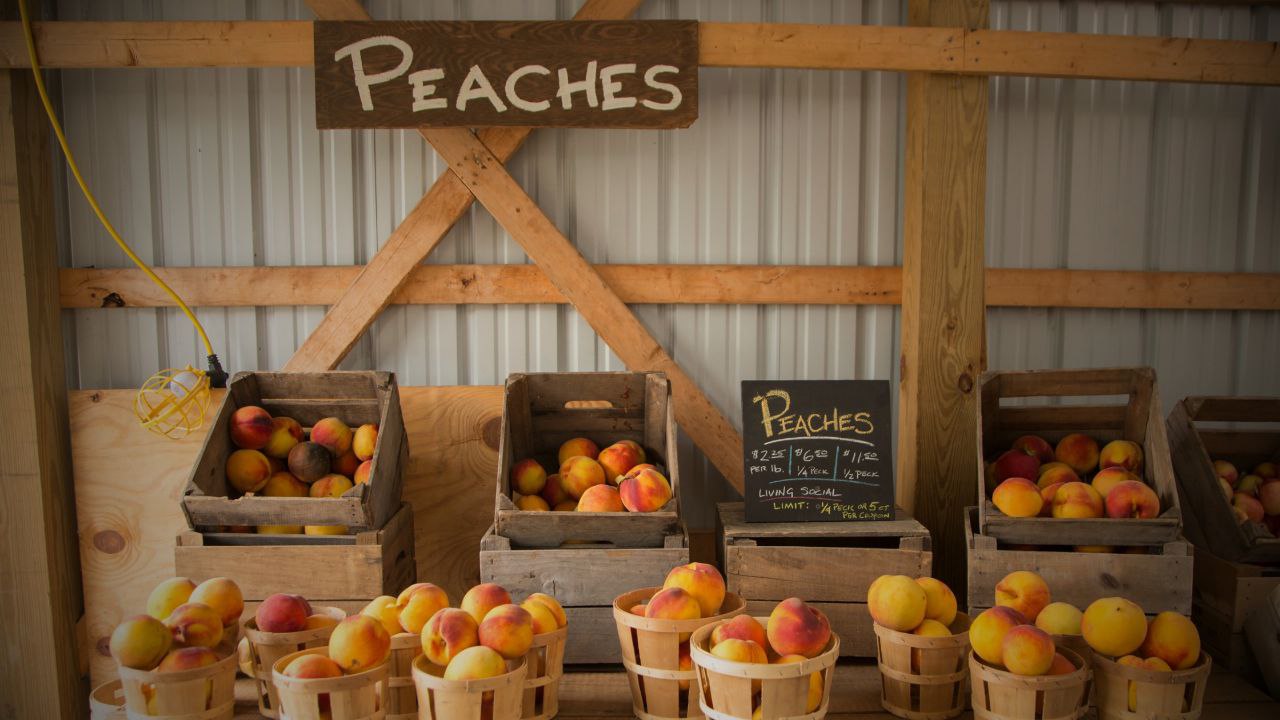
Our thriving business group hosts 3,000 members, from small solo entrepreneurs to developed companies. This week, we aim to give more exposure and introductions to the businesses of Beartaria.
We encourage the businesses of Beartaria to introduce themselves and what they do in the business group and the local state groups. We invite our community to jump into these groups to see what is going on!
This can help the wider community know that you are on the app and what you do.
As a community app that doesn’t do paid ads, lots of generic posts that just advertise your business can be a little bland.
Let’s add some value to it, here are some ideas that can help make a good introduction:
- What do you do?
- How did you get started?
- Where are you located?
- Why do you love what you do?
- What are your goals?
- How has Beartaria helped your business, whether directly or through the integration of values and practices?
- Do you have any big lessons learned through your experience that could help others?
- Let’s see some pictures or videos of your work!
We look forward to seeing all the great businesses and professionals at work in Beartaria!
Sincerely,
The Beartaria Times
If you are interested in joining our community app, you can try it out with a 7 day free trial at App.BeartariaTimes.com
Business
One Man’s Trash…
The smooth, soft feel of the flats and curves. The smell of the copper oxide on my skin and the sound of the various pieces as they fell into one another. It all intrigued me and seemed to intensify as time passed.

By: MrWhitBear
As a lifelong copperhead, I found myself wondering what I was going to do with this industrial storage tote filled to the brim with all things copper. It was a treasure trove collected from years of being a commercial plumber. From the early years of re-plumbing our family’s laundromat business with my Pop to the water conditioning business, we started together that failed. That tote had been many a mile on more adventures than anyone of us could account for. After that final attempt, we closed that tote up and packed it away.
I would open it from time to time to get something or drop something in and reminisce over pieces that brought me back to that moment and place. The jobs my wife and I worked together to make ends meet; So many pieces and parts in various states of patina.
The smooth, soft feel of the flats and curves. The smell of the copper oxide on my skin to the sound of the various pieces as they fell into one another. It all intrigued me and seemed to intensify as time passed.
We had always intended to just take it to the recycling center, and albeit nearly did when things got really lean in the last few years, (that’s another story.)
But God in his mercies had another plan
Those rosey-colored bits of beauty were called out of that dusty old tote into the light and brought back to life for another purpose that I could have never imagined.
Then one day, I realized that in my love for all things copper, I was not alone.
Imagine my surprise when listening to a Biocharisma podcast and seeing the sultan of the Gardenians light up like a kid talking about copper garden tools. My mind wandered off to that tote.
“Huh, I wonder.”
Over the years, all sorts of odd inventions were created from that box of scraps, but this was by far on another level of magnitude; could it be done?
My dad’s voice echoed through my head
“See a need fill a need, son.”
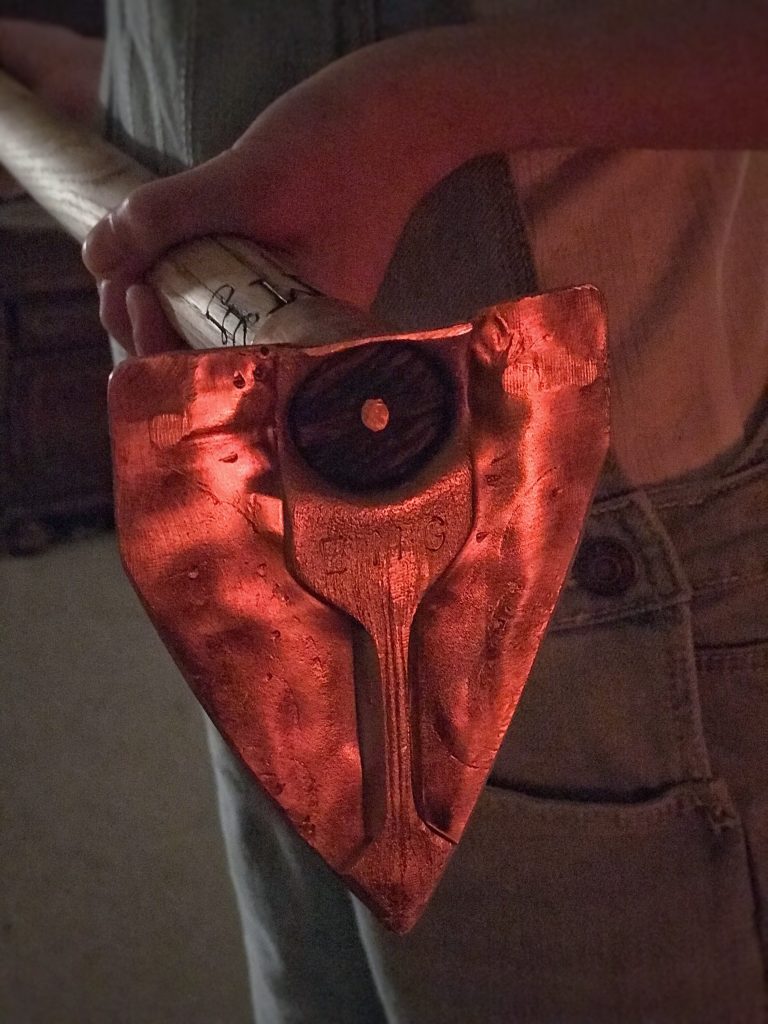
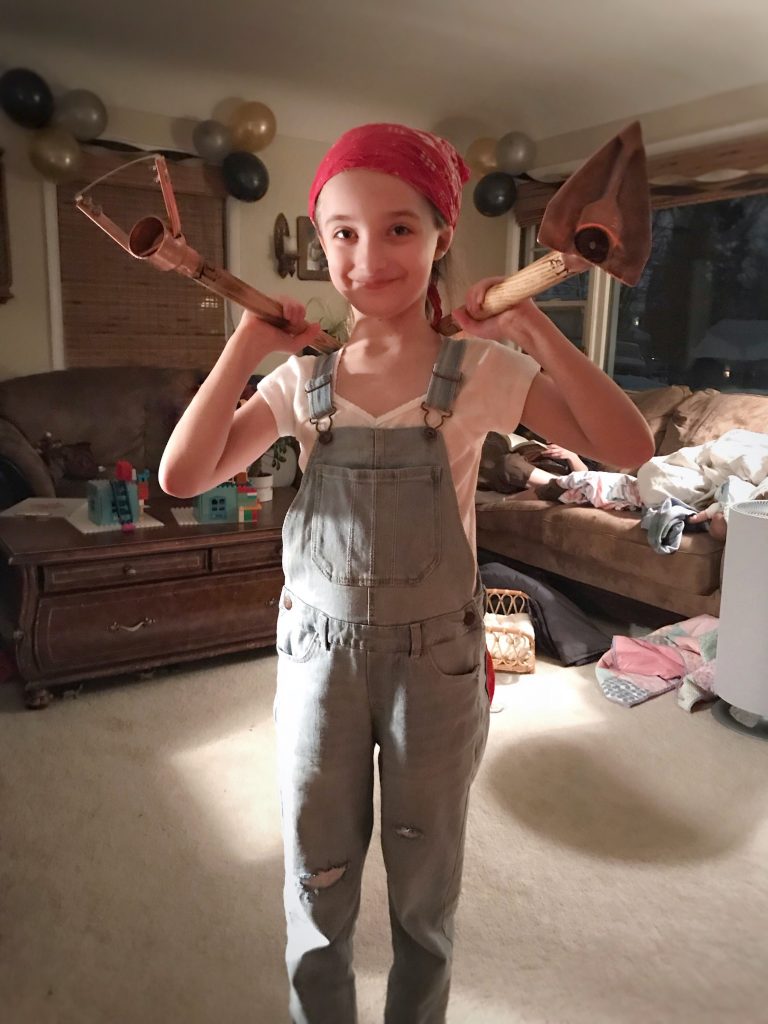
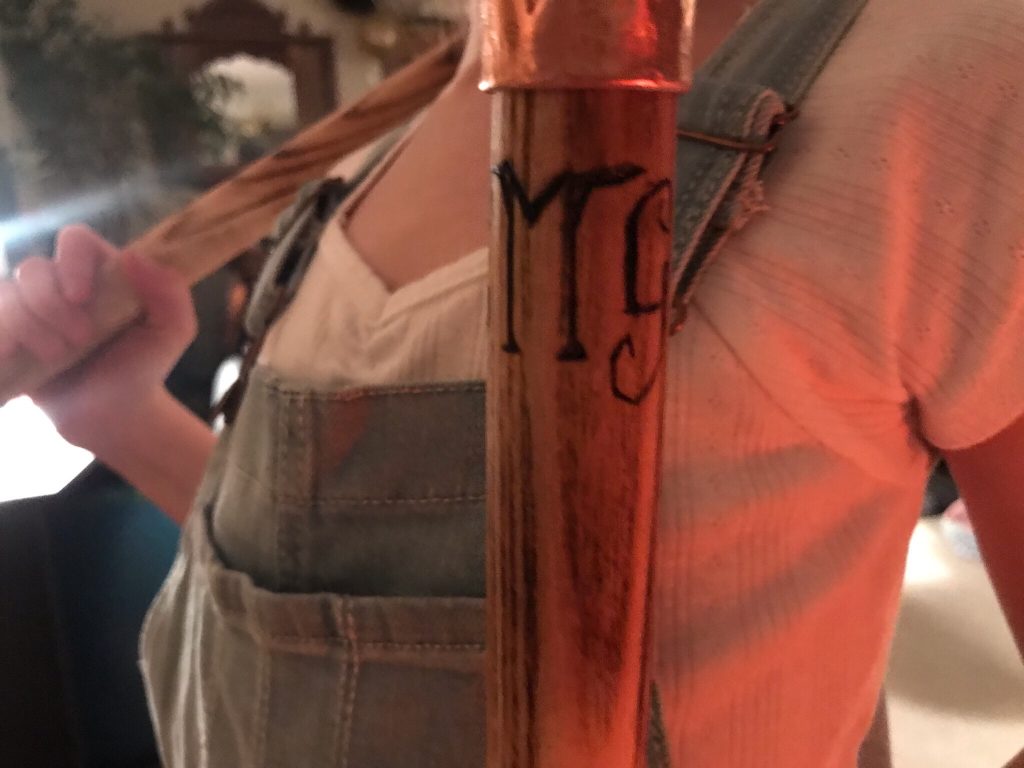
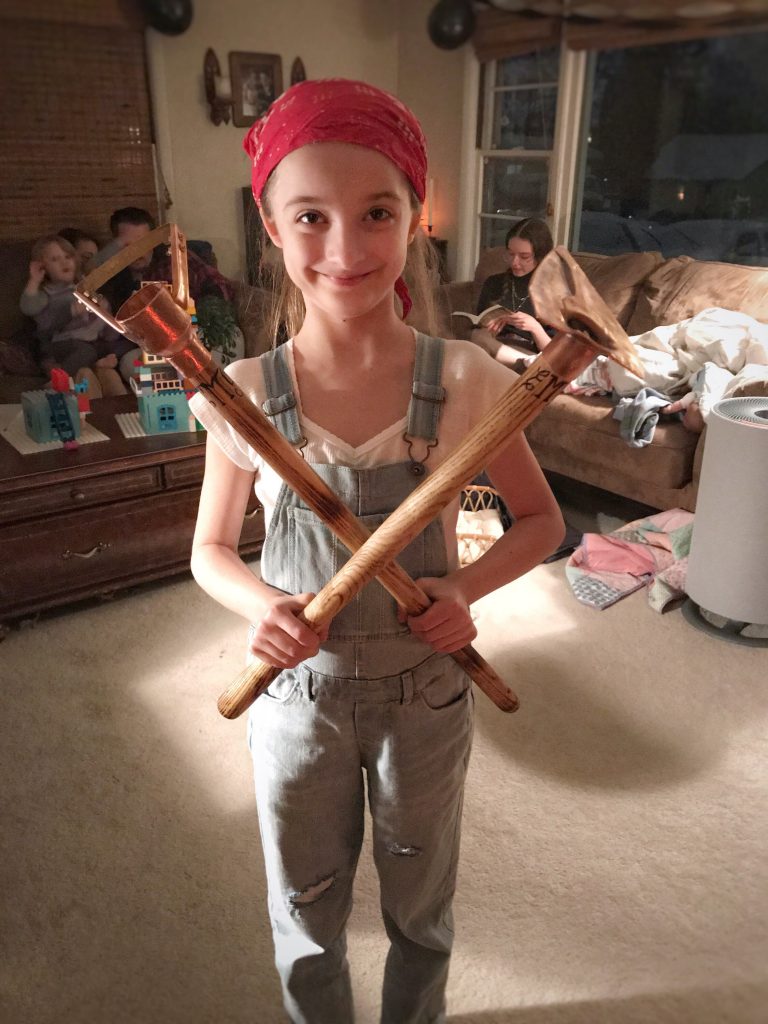
The Bears need copper tools to make their gardens flourish. Many tools were forged out of that treasure trove of leftovers, and we’ve had to buy most of this year’s supply to keep up with demand.
The first trowel had to go to Topher as a tribute to the legend for the inspiration, of course. Unfortunately, the prices of components prohibit keeping costs as low as we’ve wanted. We still keep it near cost for our Bear families, and thanks to them and the grace of God, we’ve grown in skill and productivity.
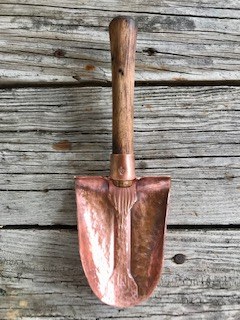
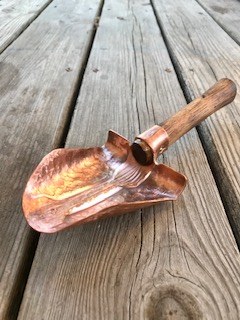
Now my hobby pays for itself, and a bit left over for the bee’s new boxes and some fresh paint this season.
Bee Alchemy helped me turn copper into liquid gold…
It was great meeting so many of you at the Festival!
God bless.
Business
FROM HOBBY TO SIDE HUSTLE
A hobby is a rewarding and enjoyable way to spend your free time. It can also be an opportunity to spend quality time with family and friends.
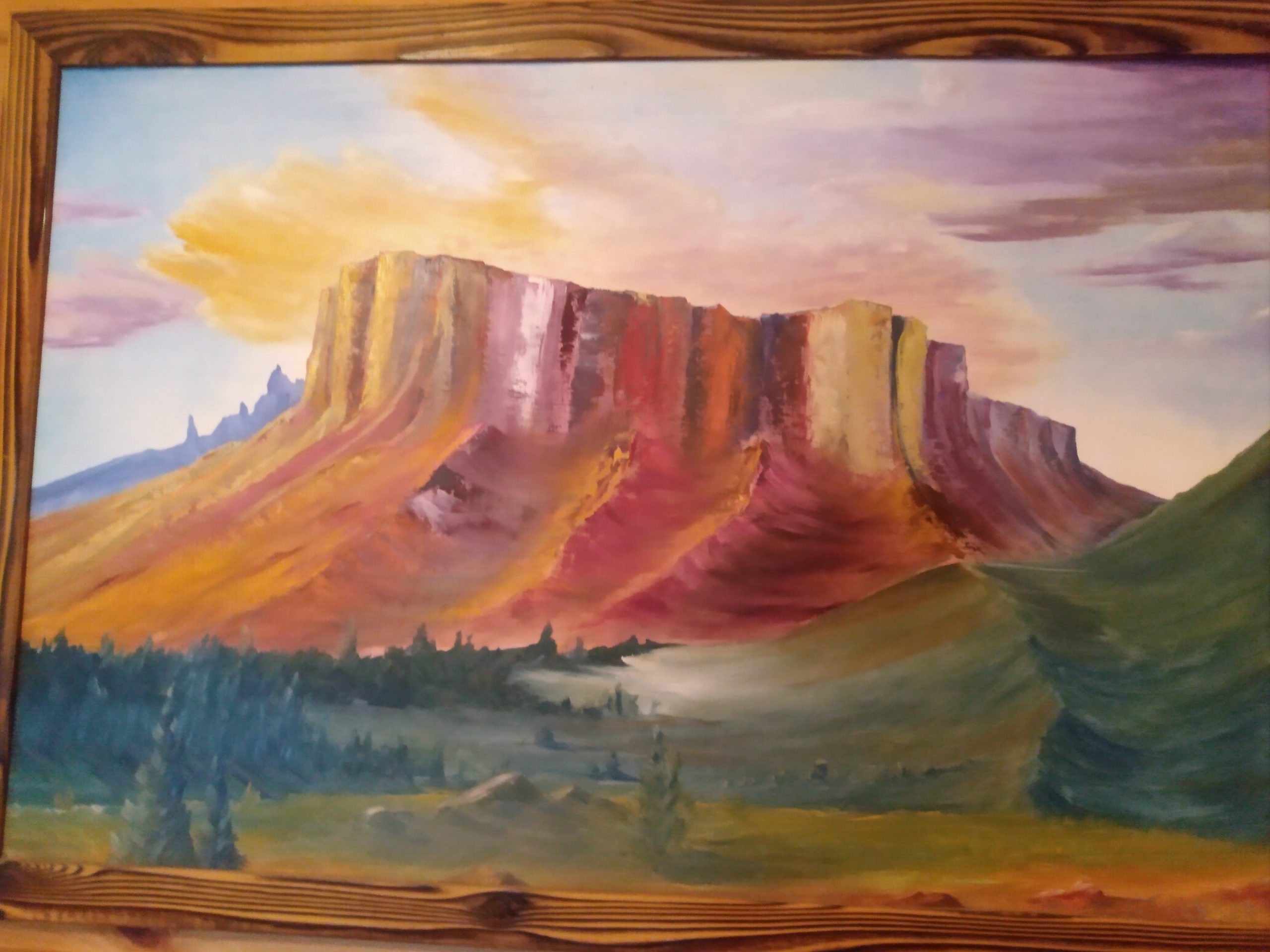
By: Woodworking Gunny Bear
If you attended the Beartaria National Festival, you might remember a beardless dude hocking handmade wooden items and making toy tops for your cubs…that was me. Despite the lack of facial hair (some habits from military life have stuck with me), I have taken up several hobbies that are traditionally enjoyed by men with sweet beards. I have also been able to parlay a couple of those hobbies into a viable means of making additional income for my family. Along the way, many lessons were learned, and more than a few mistakes were made. Hopefully, my experiences will help other bears make a smooth transition from a hobby to a side hustle. After all, the best kinds of hobbies are hobbies that pay for themselves.
Step one: Choosing a hobby.
Many of us already have one or more hobbies, but I am often astounded to find so many men and women whose only activity between work hours is watching T.V., playing video games, or surfing the internet. While there is money to be made as a competitive gamer, my experience is more applicable to hobbies where creating something is involved. If you haven’t yet chosen a hobby, the most important thing to keep in mind is that it is supposed to be a hobby, not a job.
While some hobbies easily lend themselves to being a side hustle, this shouldn’t be your primary concern when deciding how to spend your free time. The main consideration should be, “Do I actually enjoy this?”
A job that you enjoy never feels like work. As for myself, the hobbies of painting landscapes and woodworking have proven to be fun, rewarding, and profitable.
Step two: Figure out how to make your hobby pay for itself.
Initially, I never thought about selling the fruits of my hobby-related labors. I started painting landscapes many years ago. As with most “maker” hobbies, I soon had stacks of completed projects taking up space in the garage. Eventually, my wife decided that it would be a good idea to hang our favorites, then give the rest away as gifts. Once all of our friends and family owned one of my original pieces, I then needed to figure out what to do with the thirty(ish) completed works still taking up space. My wife suggested that I sell them, to which my immediate reaction was laughter. Despite my doubts, I went ahead and put up a few cardboard signs stating, “Original art for sale.” I then stood some of my nicer pieces up in the driveway…and waited. To my utter amazement, people started showing up, browsed my impromptu “art exhibit,” and walked away with one or more of my Bob Ross-inspired paintings. The money made from that sale had just paid for all of my paint, brushes, and canvases. There was even enough left over to buy a quality easel and take my family out to a nice dinner.
A few years later, my wife and I took up the hobby of woodworking. We have subsequently enjoyed countless hours of fun together and have paid for our tools and materials many times over (our first purchase with craft fair money was actually a chicken plucker). Admittedly, artwork and wooden toys, tools, etc., are fairly easy to monetize. The difficulty arises when the hobby doesn’t culminate in an easily sellable product. For example, if your hobby is fishing, you probably won’t enjoy hauling your catch to an open-air market and selling trout fillets. However, there is definitely a market for hand-tied flies and custom-made lures. In other words, you may have to find a specific aspect of your hobby that is monetizable. Some other examples would be an avid hiker offering guided nature walks or a crochet hobbyist selling scarves and beanies. Even a minimally skilled leather worker can find a way to earn a fist full of nickels by selling a few “What would Jesus do?” bracelets. The key is discerning which aspect of your hobby results in something useful or appealing to someone else.
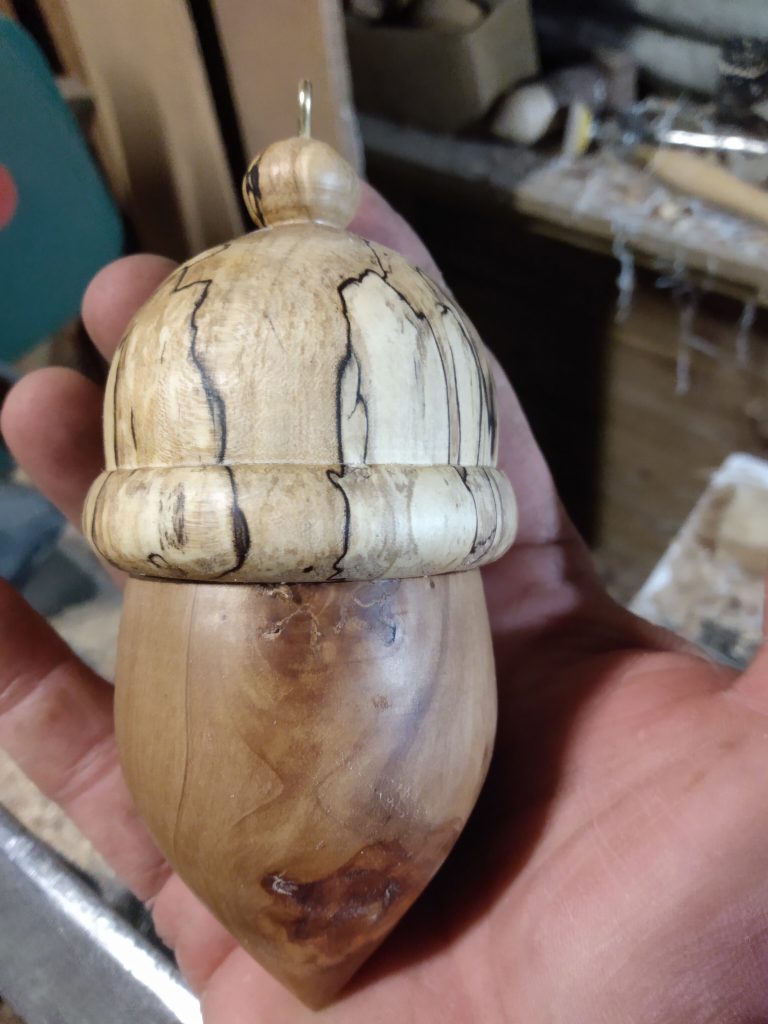
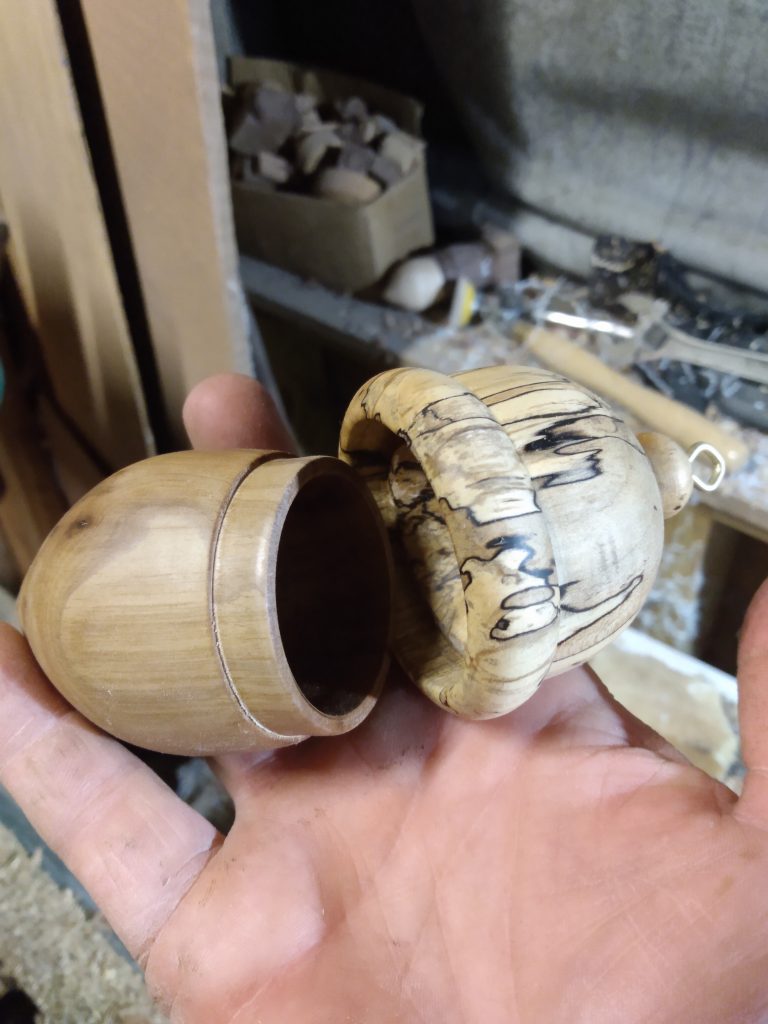
Step three: Find your market
Once you have your potential product identified, your next step is to find your market. This will largely depend on what your product is. Internet sale sites such as Etsy or Craigslist, craft shows, farmer’s markets, and swap meets are all great places to sell physical goods. Alternatively, things like guided hikes, surfing lessons, or digital items may be more successfully monetized via social media sites and word-of-mouth endorsement. Casting a broad net will help to quickly identify the best places to market your product.
Step four: Learn from your mistakes and make the most of your successes
I have made many mistakes along the way and have also had my fair share of success. What’s important is that you look at both as lessons and apply them to your craft. The best lessons are learned from someone else’s mistakes. In this spirit, I will convey some of my knowledge so you can learn the easy way. The following are a few of my lessons learned…
- Don’t skimp when it comes to essential tools. I can’t count how many “cheap” tools I went through before finally breaking down and shelling out the money for the more expensive, well-made version.
- “Free” and “used” may be four-letter words, but they are good ones. You can save big by keeping an eye out for materials and quality used tools at thrift or antique stores, garage sales, and online. We have acquired some of our most beautiful wood from neighbors who just cut a tree down and were looking for someone to haul it off. We have also saved hundreds of dollars by opting for quality used versions of many of our most expensive tools.
- Remember that you can sell one million things for a dollar or one thing for a million dollars, but how many people carry around a million bucks? We do make a few expensive items, but they don’t always sell. We also make a bunch of inexpensive items that sell consistently. Those cheaper items always pay the bills, and when the expensive ones do sell, it’s gravy.
- Get the family involved. My wife also enjoys woodworking. She specializes in different areas, which increases the number of unique items that we can offer. Additionally, our daughter sells her artwork alongside our wooden crafts. This teaches her about labor/work ethic, finances, and business practices. It also turns a festival or craft show into a fun family affair.
- Don’t get burned out. Remember that this is an activity that you chose because you enjoy it. I reached a point where I was doing commissioned pieces, staying up late to fill orders, and quickly realizing that my hobbies had somehow become work. I made a conscious decision to shut down the wood lathe for a time and to stop doing commissioned paintings. I focused on settling into our new farm, and until this year’s Bear Festival, I didn’t try to sell a single one of our creations. Because of this year-long break, along with the knowledge that I was making things for other bears, my hobbies had become fun again. We now participate in just a few craft fairs a year and can focus on the making, not the selling.
A hobby is a rewarding and enjoyable way to spend your free time. It can also be an opportunity to spend quality time with family and friends. Lastly, it can be a means to supplement your income while doing something fun. Happy hobbying.
-

 Just Crushing2 weeks ago
Just Crushing2 weeks agoChristopher Gardner Completes First Dome Framing Project in Missouri: Exclusive Interview
-

 Just Crushing2 months ago
Just Crushing2 months agoBeartaria Ozark Campground Launches Community Forum!
-

 Just Crushing2 months ago
Just Crushing2 months agoMap it! – Discover Beartarians Living, Working, and Crushing Near You!
-

 Just Crushing2 months ago
Just Crushing2 months agoWhy Do We Feel So Free?
-

 Lifestyle2 months ago
Lifestyle2 months agoReconnect and Rejoice: Beartaria Times Weekly Challenge
-

 Reports2 months ago
Reports2 months agoReport: EF-1 Tornado Touches Down In The Ozarks
-

 Business2 months ago
Business2 months ago3000 Members In Our Business Group!: This Week On Our Community App!
-

 Wellness2 months ago
Wellness2 months agoBeartaria Times Member Shares History and Benefits of Haymaker’s Punch

